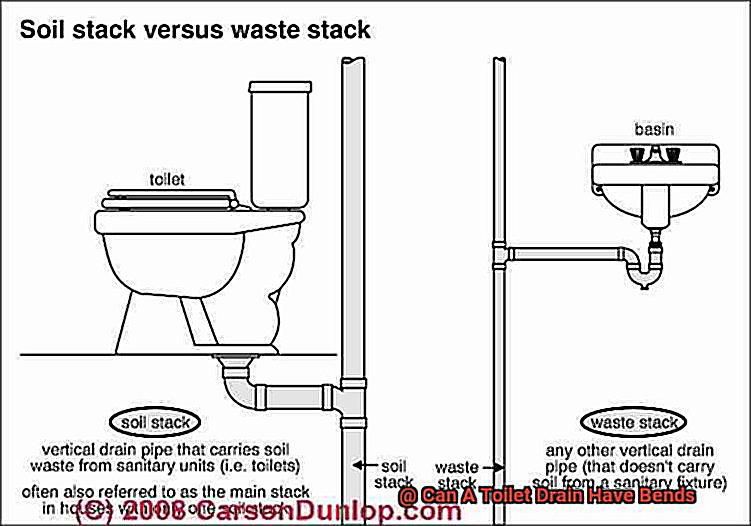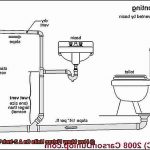Greetings, dear readers. Today, we’re going to discuss a topic that’s often ignored but is crucial to our daily lives: toilet drain bends. Have you ever had guests over, and the toilet drain got clogged due to a bend or twist? It’s an unpleasant and embarrassing situation that no one wants to experience.
Toilet drains with bends and twists can cause a variety of unhygienic issues. So, let’s get into the details: can a toilet drain have bends?
In this blog post, we’ll explore the ins and outs of toilet anatomy, why toilet drain bends occur, and how to prevent and fix them. We’ll also discuss the importance of maintaining a clog-free toilet for a healthy living environment.
Our aim is not only to educate you about toilet drain bends but also to provide practical solutions for tackling this problem. So without further ado, let’s dive into this informative post on “Can A Toilet Drain Have Bends?”
Contents
What is the International Residential Code (IRC)?
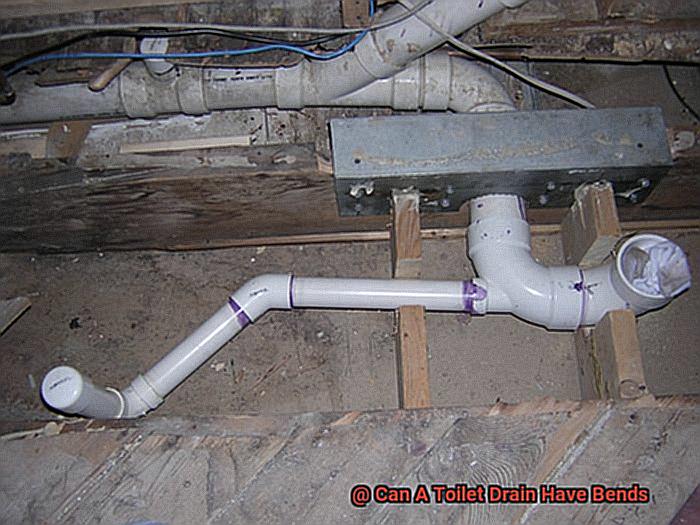
Before you start, it’s important to understand the regulations set forth by the International Residential Code (IRC), which outlines the minimum requirements for safe and habitable residential construction. The IRC, published by the International Code Council (ICC), is used as the model code for most states in the US and covers all aspects of residential construction, including plumbing systems.
When it comes to toilet drains, the IRC specifies that they must be installed with a slope of at least 1/4 inch per foot to allow for proper drainage. But that’s not all – there are specific regulations around bends and offsets. Toilet drains must be installed without any bends or offsets greater than 45 degrees. This means that while toilet drains can have bends, they must be gradual and not exceed the maximum angle specified in the IRC.
Why is this important? Following these regulations is crucial to prevent potential issues down the line, such as clogs or leaks. It may be tempting to cut corners or improvise during installation, but doing so can lead to costly repairs. By adhering to IRC regulations, homeowners can ensure their plumbing systems are safe, reliable, and up to code.
It’s important to note that the size of the pipe can impact how many bends it can handle. Smaller pipes are more prone to clogs and can become overwhelmed if there are too many bends or angles in the system. Plumbers recommend limiting bends to no more than two 90-degree angles in any length of pipe, with gradual curves preferred over sharp angles.
If you’re considering making any changes to your plumbing system, it’s essential to consult with a professional plumber who can provide expert advice on adhering to IRC regulations.
What is the Minimum and Maximum Slope for Toilet Drains?
It’s an essential aspect to consider when installing a new toilet or renovating your bathroom. You want to ensure that waste and water can flow away from the toilet without any blockages or backups, which can cause significant plumbing issues down the line.
So, what is the ideal slope for toilet drains? According to the International Residential Code (IRC), the minimum slope for a toilet drain is 1/4 inch per foot or one inch of drop for every four feet of horizontal run. This gentle slope ensures that waste can travel efficiently towards the sewer or septic system without any obstructions.
On the other hand, the maximum slope for a toilet drain is 3 inches per foot or a 25% slope. However, this steep angle is not recommended as it can cause water to move too quickly through the drain, leading to clogs and blockages. Moreover, a steep slope can cause problems with the proper functioning of the toilet’s flushing mechanism.
It’s vital to note that building codes may vary depending on your location. Therefore, it’s crucial to check with your local authorities to ensure that you’re following the correct guidelines. In general, toilet drains should be installed with a gradual slope that allows for efficient waste removal without causing any plumbing issues in the long run.
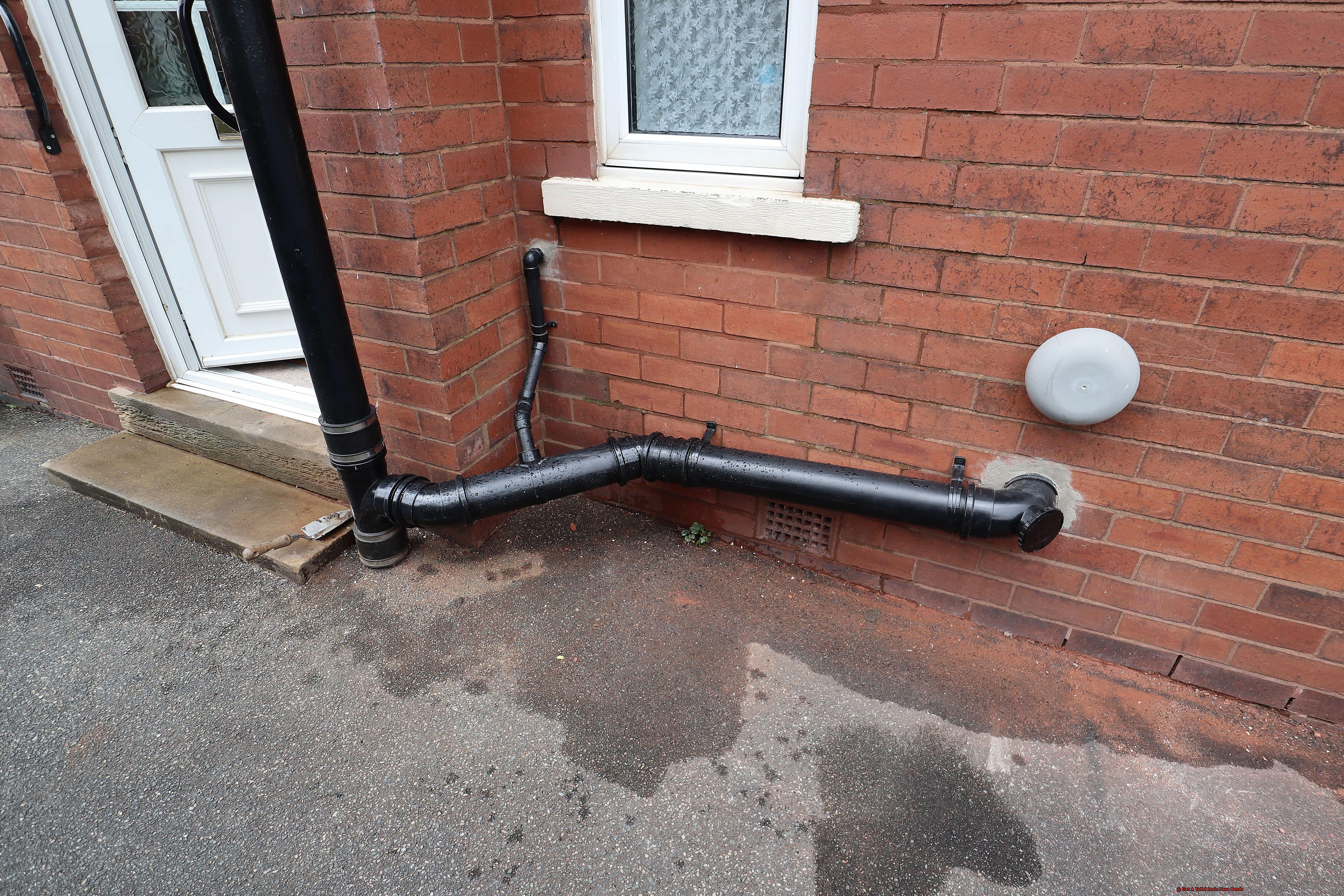
When it comes to choosing the best slope for toilet drains, it’s crucial to follow IRC regulations and seek professional help from plumbers. Proper installation will ensure that your toilet functions correctly and prevent any potential plumbing issues in the future.
How Can Too Many Bends Impact Plumbing Systems?
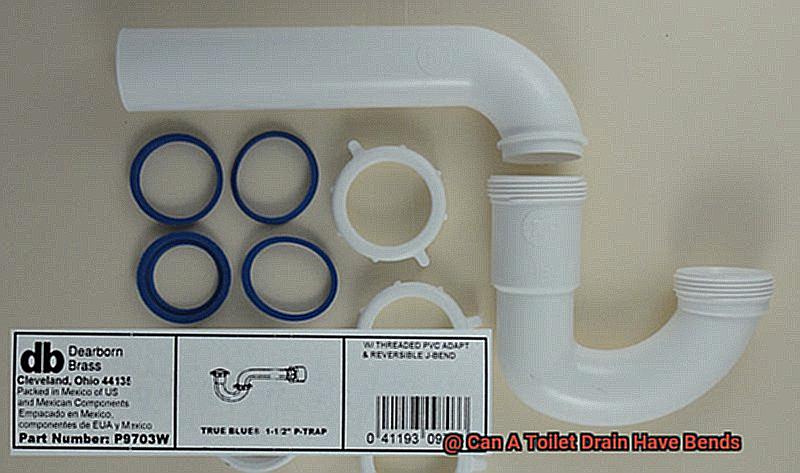
While some bends are necessary for proper drainage, excessive ones can lead to blockages, slow draining water, and other plumbing issues.
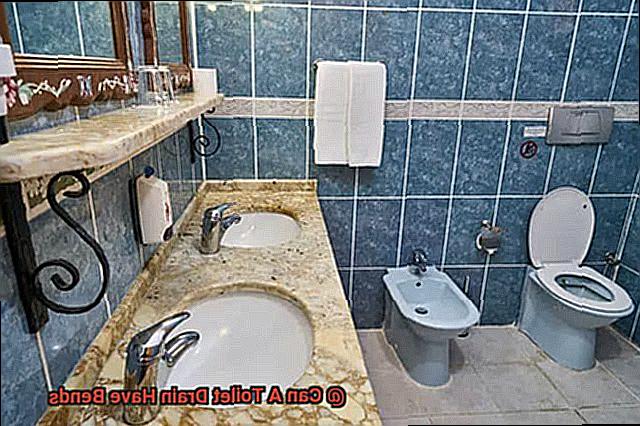
Picture this: the more bends there are in your toilet drain pipe, the more likely it is that blockages will occur. These bends create little pockets where waste can get trapped and build up over time, leading to nasty blockages that can cause sewage backups and other serious plumbing issues.
But wait, there’s more. Too many bends in a toilet drain can also cause slow draining water. The bends create resistance in the pipe which can slow down the flow of water. Over time, this can cause water to back up and even overflow from the toilet bowl – not a pretty sight.
And as if that weren’t enough, too many bends can make it difficult to clean the pipe properly.
Traditional cleaning tools like a plumbing snake or plunger may not be able to access all parts of the pipe, leading to bacteria buildup and other unpleasant issues like bad odors.
What Are the Limitations of Bends in Toilet Drains?
The issue may be due to the limitations of bends in your toilet drain. While bends are essential for proper drainage, too many or sharp angles can cause problems that can lead to blockages, slow draining, and even complete drainage failure.
One of the major limitations of bends in toilet drains is the potential for blockages. Waste can get caught and build up over time, eventually leading to a blockage in the drain. This not only causes slow draining but could even prevent your toilet from flushing properly.
But that’s not all – too many bends or sharp angles can also lead to slow draining. Water may have a harder time flowing through the drain quickly, leading to frustration and inconvenience for homeowners.
In some cases, bends in toilet drains can even cause complete drainage failure. If there are too many bends or sharp angles, the drain may not be able to handle the volume of water and waste passing through it. This can cause backups and other issues that can be messy and unpleasant to deal with.
So what can you do to avoid these limitations? It’s crucial to be mindful of the number and angle of bends in your toilet drain. Hiring a professional plumber to assess and improve your system before it’s too late is always a good idea.
In conclusion, while bends in toilet drains are vital for proper drainage, too many or sharp angles can have limitations that lead to blockages, slow draining, and even complete drainage failure.
Does Pipe Size Affect the Number of Bends Allowed?
Too many bends in your toilet drain could be the culprit. But did you know that pipe size can also affect the number of bends allowed in your toilet drain? Let’s explore this further.
Larger pipes can handle more bends than smaller pipes. The reason is simple – larger pipes have more space for water to flow through, which means they can accommodate more changes in direction without causing clogs or backups.
However, there are limits to how many bends are acceptable, even with larger pipes. Too many bends can create areas where waste and debris can accumulate, leading to blockages and other problems.
So, what should you do if you’re dealing with too many bends in your toilet drain? As a general rule, it’s best to limit the number of bends as much as possible, regardless of the pipe size. Proper installation and maintenance are also crucial to ensuring that your toilet drain operates smoothly and efficiently for years to come.
But what if you need to add some bends due to installing a new toilet in a bathroom that isn’t already plumbed for it? In cases like this, it’s essential to work with a professional plumber who can help you determine the best way to add the necessary bends without creating problems down the line.
While pipe size can affect the number of bends allowed in a toilet drain, it’s just one factor to consider. By limiting the number of bends and working with a professional plumber when necessary, you can keep your toilet drain running smoothly and avoid costly repairs in the future.
5cWbYMdcYdk” >
Conclusion
Toilet drain bends may seem like a small detail, but they play a vital role in our daily lives. These bends ensure proper drainage and prevent unwanted blockages that can cause slow draining water or even complete drainage failure. However, too many or sharp angles can be detrimental to the system’s overall efficiency.
It’s essential to follow the International Residential Code (IRC) regulations when installing toilet drains. The IRC outlines minimum requirements for safe and habitable residential construction. For example, bends or offsets greater than 45 degrees are not permitted, and gradual curves are preferred over sharp angles. Smaller pipes are more susceptible to clogs and can become overwhelmed if there are too many bends or angles in the system. Plumbers recommend limiting bends to no more than two 90-degree angles in any length of pipe.
Proper installation and maintenance are crucial to ensuring your toilet drain operates smoothly for years to come. Hiring a professional plumber to assess and improve your system before it’s too late is always a wise decision.
By adhering to IRC regulations, homeowners can ensure their plumbing systems are safe, reliable, and up-to-date with current codes. Understanding the importance of toilet drain bends and taking proactive steps towards maintaining a clog-free toilet is crucial for a healthy living environment.
In summary, keep your toilet drain bend-friendly by following IRC regulations, limiting sharp angles, and hiring professionals for installation or maintenance needs.

